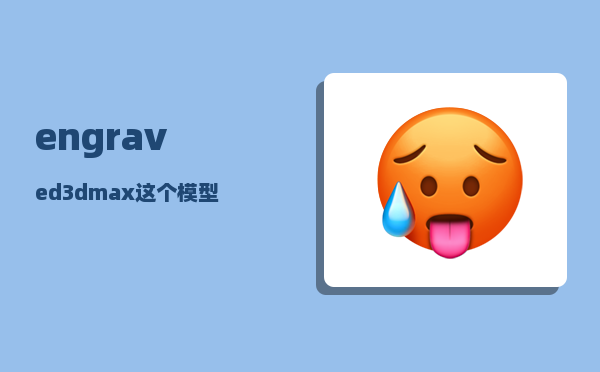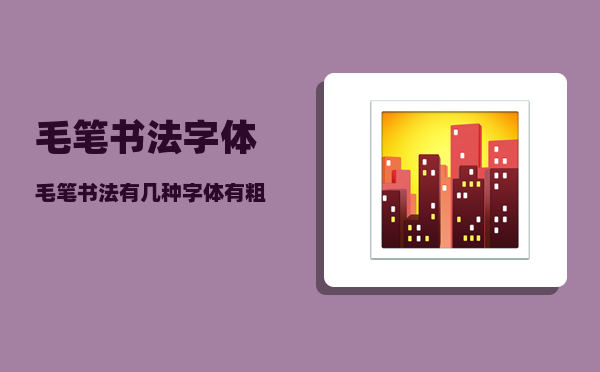engraved_3dmax这个模型能刻字进去吗
engraved,3dmax这个模型能刻字进去吗?
1、打开3dsmax。 在视口中,创建一个长方体和简单的文字。 如果你懒得去创建它们,你可以下载3DSMAX练习文件(RAR,3DSMAX 8格式) 。 打开文件engravedlogo1.max。 除了文字,你可以用你自己的矢量标志。

2、选择文字或图案。 在命令面板中,单击“修改”选项卡。 从下拉列表中添加倒角。 在“倒角值”卷展栏,使用值,如下面的图片。
3、在顶视图中,移动斜面的文本,以便它与框相交。 接下来,我们将使用布尔操作。
4、选择框。 在命令面板中,单击“创建”选项卡。 下拉列表选择“复合对象”。 单击“布尔”。 操作,先选择矩形,再选择文字,使用默认值(减法AB),完成。
5、现在,完成刻字 。
四川铜币100文价值多少?
改革开放以后随着中国经济的高速发展,人民生活水平的提高,古玩市场也是一片繁荣,古钱币作为特殊的载体,作为一个国家政治、经济、文化艺术的反映,越来越为收藏爱好者所重视,时至今日,其已成为文博收藏的新热点,一枚品相好、铸造精良、存世稀少的古币,往往价值不菲,其价值往往超乎人们的想象,让一般收藏爱好者望而却步!
With the high speed development of China's economy after the reform and open policy, the improvement of people's living standards, antique market is also a boom, ancient COINS, as a special carrier, as a national political, economic, cultural and art reflect, more and more attention by collect lover, today, it has become a new hotspot, wenbo collection of a lover, excellent casting, only a few old COINS, often valuable, its value is often beyond people's imagination, turned off generally collect lover!
“军政府造四川铜币”是辛亥革命时期的产物。1911年12月发生“成都兵变”,以尹昌衡、罗纶为正副都督的四川军政府取代了成立仅12天的大汉四川军政府。新的四川军政府成立之初即面临着需用日繁、度支日绌的财政困窘局面。军政府迅速接管了四川成都造币厂,决定铸造“四川铜币”以应急。民国元年(1912年)4月,四川成都造币厂奉四川军政府之命,开模铸造“军政府造四川铜币”(也称“汉”字铜元)。
"The military government made sichuan copper COINS" is the product of the 1911 revolution. In December 1911, the "chengdu mutiny" took place, and the sichuan military government, with Yin changheng and luo lun as the chief and deputy governors, replaced the 12-day-old han military government in sichuan. At the beginning of the new military government in sichuan, it was faced with a financial dilemma. The junta quickly took over the mint in chengdu, sichuan province, and decided to mint "sichuan copper COINS" as an emergency. In April of the first year of the republic of China (1912), the mint in chengdu, sichuan province, on the orders of the military government of sichuan, began to mold and cast "military government made sichuan copper COINS" (also known as "han" character copper yuan)
这枚“军政府造四川铜币当制钱壹百文”,直径为3.9厘米,重21.4g,为民国二年(1913年)成都造币厂铸造。正面中央珠圈内镌“四川铜币”四字楷书,四字中心镌刻精美的芙蓉花,气韵十足,象征蓉城成都。珠圈外上端铸有“军政府造”四字,代表铸币地点,下端镌币值“当制钱壹百文”,左右两侧各镌一个四瓣花星,铜币背面珠圈上环镌“中华民国二年”六字。珠圈内镌一篆书“汉”字,以直线纹为底,具有反满兴汉的意义。有横向底纹装饰,旁围十八个小圆圈组成的圆圈,象征着当年响应辛亥革命的十八个省。此币整体打制极为规整,压力十足,工艺精湛制作精良,图案饱满精美,原色巧克力包浆,状态极佳,品相顶级,历经百年存世甚稀,真可谓凤毛麟角,得以一见颇为不易,极为难得罕贵,具有很高的艺术观赏价值和收藏价值。
The copper coin, made by the military government of sichuan province, was minted by the chengdu mint in 1913. It was 3.9 centimeters in diameter and weighed 21.4 grams. The front central bead engrave inside the circle "sichuan copper coin" four word regular script, four word center engraved exquisite hibiscus, full of charm, symbol of chengdu chengdu. Outside bead ring top end is cast "military government makes" 4 words, represent coinage place, bottom end enrolls a value "when making money 100 words", left and right sides enrolls a 4 petal to spend a star respectively, copper coin reverse side enrolls on loop enrolls "Chinese republic two years" 6 words. Bead ring engrave a seal character "han", with straight line grain as the end, has the meaning of anti - man xing han. It is decorated with horizontal shading and surrounded by 18 small circles, symbolizing the 18 provinces that responded to the revolution of 1911. This coin overall dozen is very neat, the pressure is full, the craft is exquisite, the design is full and exquisite, the primary color chocolate bag pulp, the condition is very good, the product phase is top class, after a hundred years of existence is very rare, it is very rare to see is very difficult, very rare rare, has a high value of art appreciation and collection.
俗话说“物以稀为贵”。此枚四川铜币见证了辛亥革命后民国建立之初的那一段波澜壮阔的革命历史,带有鲜明的时代印记,纪念意义非凡。在历史的沉淀里洗尽铅华,深沉的色泽使其更添韵味,无形中散发着温润含蓄的美,耐人寻味,静心观赏,犹如品香茗般,让人如痴如醉,觉得韵味层叠。其所具有得文物价值、研究价值是任何东西都不可替代的,弥足珍贵,加之当今又正处于钱币收藏热潮之中,收藏群体不断扩大,其未来升值空间巨大!
As the saying goes, "the rare is the valuable." This sichuan copper coin bears witness to the magnificent revolutionary history at the beginning of the republic of China after the xinhai revolution. In the historical precipitation in the wash lead hua, deep colour and lustre makes its more add lasting appeal, imperceptible send out the United States of gentle and embellish implicative, be interesting to think of, jing xin appreciation, be like taste tea, let a person be like infatuated, feel lasting appeal cascade. It has the value of cultural relics, research value is anything can not be replaced, it is precious, together with the current and is in the coin collection boom, the collection group is constantly expanding, its future appreciation space is huge!
求中山陵简单好背的英文导游词?
中山陵风景区景区介绍
中山陵是中国近代伟大的政治家孙中山先生的陵墓,它坐落在江苏省南京市东郊钟山东峰小茅山的南麓,西邻明孝陵,东毗灵谷寺,傍山而筑,由南往北沿中轴线逐渐升高,整个建筑群依山势而层层上升,气势宏伟。
1925年3月12日,孙中山在北京逝世,遵照他生前安葬在钟山的遗愿,灵柩暂停放在北京香山碧云寺内, 并决定在南京钟山修建他的陵墓。自1926年春动工,至1929年夏建成 。
中山陵坐北朝南,面积共8万余平方米,其中祭堂为仿宫殿式的建筑,建有三道拱门,门楣上刻有“民族,民权,民生”横额。祭堂内放置孙中山先生大理石坐像,壁上刻有孙中山先生手书《建国大纲》全文。
主要建筑有:牌坊、墓道、陵门、碑亭、祭堂和墓室等。从空中往下看,中山陵像一座平卧在绿绒毯上的“自由钟”。山下中山先生铜像是钟的尖顶,半月形广场是钟顶圆弧,而陵墓顶端墓室的半球形的穹隆顶,就像一颗溜圆的钟摆锤,广场南端的鼎台(现改为中山先生的立像)为大钟的钟纽,“鼎”在古代是权力的象征,因此整个大钟乃含“唤起民众,以建民国”之意。孙中山的立像英姿勃勃,摆动的手势好像正在发表关系国家命运的演说。
中山路是原来的迎柩大道,是孙中山先生灵柩南下时走过的路,也是南京第一条柏油马路,1926年动工,1929年完成。当时,孙中山先生的葬事筹备处广泛征集陵墓设计方案。
结果,建筑师吕彦直设计的“自由钟”式图案荣获首奖。吕彦直还被聘请为陵墓总建筑师。这组建筑,在型体组合,色彩运用,材料表现和细部处理上,都取得很好的效果,色调和谐,从而更增强了庄严的气氛。
陵墓入口处有高大的花岗石牌坊,上有中山先生手书的“博爱”两个金字。牌坊这类建筑在功能上主要是用来歌功颂德的。“博爱”两字正点出了孙中山先生博大的胸怀和崇高的理想。石坊后是长达375米、宽40米的墓道。前行为陵门,它以青色的琉璃瓦为顶,门额上为孙中山的手迹“天下为公”四个大字。
这里用青色的琉璃瓦有其一定的含意,青色象征苍天,青色琉璃瓦乃含天下为公之意,以此来显示孙中山先生为国为民的博大胸怀。再进为碑亭,一块高约6米的碑石上刻着“中华民国十八年六月一日中国国民党葬总理孙先生于此”的鎏金大字。从牌坊开始上达祭堂,共有石阶392级,8个平台。
攀登如此多的石阶极为艰难,但当大家走完这段长距离陡峻的石阶以后,一定会悟出<<总理遗嘱>>中有关的嘱咐:“革命尚未成功,同志仍需努力”的含义。台阶用苏州花岗石砌成。
最高的平台有华表两座,后为祭堂。华表乃为柱状标识物,标志祭堂即在此。祭堂有三个拱门,分书“民族”、“民权”、“民生”门额。这里是仿宫殿式的祭堂。祭堂的门楣上刻有孙中山手书“天地正气”四字,表达了孙中山先生奋斗的理想。
堂中有中山先生大理石坐像,高4.6米,逼真生动,是世界名雕刻家保罗兰窦斯基的杰作。像座东西四周有反映中山先生革命事迹的浮雕。祭堂东西护壁大理石刻着中山先生手书的遗著《建国大纲》和胡汉民等人书写的<<总理遗嘱>>。
在这里,不仅使我们看到了孙中山先生为推翻两千多年来封建帝制的不朽勋业和艰苦斗争的历程,而且也看到了孙中山先生为我中华独立、富强、大展宏图的建国思想。堂后有墓门二重,两扇前门用铜制成,门框则以黑色大理石砌成。上有中山先生手书“浩气长存”横额。
二重门为独扇铜制,门上镌有“孙中山先生之墓”石刻。进门为圆形墓室,直径18米,高11米。中央是长形墓穴,上面是中山先生汉白玉卧像,瞻仰者可围绕汉白玉栏杆俯视灵柩上的卧像,此像系捷克雕刻家高棋按遗体形象塑造,十分逼真。
下面安葬着孙中山先生的遗体。墓穴直径4米深5米,外用钢筋混凝土密封。南京解放后,刘伯承任市长时,特地从湖南运来2万株杉树和梧桐树,种植在这里。
30多年来,中山陵园不断整修拓新,整个园林面积达3000多公顷。陵墓周围,郁郁葱葱,景色优美。中山陵是我国伟大的民主革命先行者孙中山的陵墓,位于南京紫金山中茅山南麓,陵墓的建筑,壮丽雄伟。到南京游览的人,一般都要到中山陵瞻仰这位革命家的墓地。孙中山先生虽然与世长辞,但是他浩气长存,永远为世人所敬仰。
中山陵的建筑风格中西合壁,钟山的雄伟形势与各个牌坊、陵门、碑亭、祭堂和墓室,通过大片绿地和宽广的通天台阶,连成一个大的整体,显得十分庄严雄伟,既有深刻的含意,又显得十分庄严雄伟,更有宏伟的气势,设计非常成功,所以被誉为“中国近代建筑史上的第一陵”。
Sun Yat-sen was China's great statesman Sun Yat-sen's tomb. It is located in east China's Jiangsu Province, Nanjing Zhongshan eastern XIAOMAOSHAN the south, next to Xiao, a close Spirit Valley East, and build a mountainside. increased gradually from south to north along the axis, the whole building complex layers of the mountain and increase the momentum of magnificent.
March 12, 1925, Dr. Sun Yat-sen died in Beijing, in accordance with the wishes of his lifetime buried in Zhongshan. Biyunsi suspended on the coffins, 86, and decided to build his tomb in Nanjing Zhongshan. Since the spring of 1926 to start the summer of 1929 to build.
Sun Yat-sen sit north to south, covering an area of 800 million square meters, of which the Great Hall of the festival palace-building simulation, have three arches. doorway inscribed with "nation, civil rights, and the people's" banners. Dr. Sun Yat-sen, festival halls placed marble Zuoxiang, Dr. Sun Yat-sen wall engraved with the text of a handwritten "principles for national reconstruction".
Its main structures : the arch, coins, Mausoleum doors Pavilion, and the tomb of the Great Hall and other ceremonies. From the air down, the Sun Yat-sen as a supine in the Green delivered acrylic blankets on the "freedom bell." Foot of the statue of Dr. Sun Yat-sen is the steeple bell, semilunar Place bell roof arcs, top of the tomb and the tomb of the hemispherical dome roof, as the first round bell pendulum slip. Place the tripod southern Taiwan (now the images of Dr. Sun Yat-sen) to the clock bell in New York, the "ting" is the ancient symbol of power. The clock is therefore with the whole "to arouse the people to build in" with the United States. Sun images of heroic vitality, the gesture seems to swing between the destiny of the speech was delivered.
Chungshan is the original greet bier Road, is Dr. Sun Yat-sen when the coffins through the south. Nanjing is the first asphalt road, started in 1926, completed in 1929. At that time, the preparatory office of Dr. Sun Yat-sen's funeral affairs program designed to recruit tomb. .
The results, the design architect Lv direct "Liberty Bell" type design won first prize. Lv also been hired to direct the grave of Chief Architect. This set of construction, type combination, use of color, material handling performance and detail, we have achieved very good results, color harmony. thereby enhancing the solemn atmosphere.
Entrance to the grave of a tall granite arch, a handwritten Dr. Sun Yat-sen the "fraternity" two Rongji. In such a landmark building is used to singing the praises of the main functions. "Fraternity" revealed word of Dr. Sun Yat-sen are broad-minded and lofty ideals. After the arch is 375 meters long, 40 meters wide oval. Behavior Mausoleum doors, it's a light blue glazed tile roofs, doors places on the works of Dr. Sun Yat-sen "commerce" four characters.
Here the use of the color blue glazed tile has a certain meaning that the color blue symbol of the heavens : the color blue, glazed tiles containing Whether it is realized. Dr. Sun Yat-sen so as to show the breadth of the country and the people in mind. Choice for further progress. The steles piece about 6 meters high on the words "Republic of China on June 1 1929 Chinese Kuomintang funeral here, Mr. Prime Minister Sun," a unique golden characters. From the festival reached a landmark court began, a total of 392 stone steps grade eight platform.
Climbing the stairs so many extremely difficult, but when you finish this long after the steepest stairs. will realize "the" premier wills "," the exhortation : "The revolution has yet to succeed, keep on working hard," meaning. Level with the granite blocks in Suzhou
The platform has a maximum two-table, after the festival Hall. China is a columnar table markers, signs in the Great Hall of this festival. Festival Hall has three arches, the sub-book "nation", "human rights" and "people" from the amount. Here is the festival palace-style Great Hall of imitation. Sun Festival Hall doorway engraved with a handwritten "world justice," The characters struggle to express the ideals of Dr. Sun Yat-sen.
Dr. Sun Yat-sen Hall has marble Zuoxiang, 4.6 meters high, realistic, Portland is world famous sculptor Paul sinus Karpinski masterpiece. Block things around as a reflection of Dr. Sun Yat-sen's revolutionary deeds of arms. Festival Hall Wall things handwritten marble engraved with the posthumous work of Dr. Sun Yat-sen's "principles for national reconstruction" and Mr.hu others write "the" premier wills ",".
Here, we will not see the Sun Yat-sen to overthrow the feudal monarchy immortal donated 2,000 years of history and hard struggle, I also see the Sun as the Chinese independent, strong and grand plans for the founding ideas. Yet Hall after two heavy, made of either copper front door, door frames through black marble blocks. Dr. Sun Yat-sen handwritten on the "noble spirit that will never perish" banners.
Dual fan brass door for independence, on the eastern gate "Mr. Sun Yat-sen's Tomb" stone. Comes round tomb, 18 meters in diameter and 11 meters high. Central is a long hole, lying on top of the white marble like Dr. Sun Yat-sen, He visited the site may lie around like the white marble railing overlooking the casket, as this system moves by the Czech sculptor high body image creation very realistic.
Dr. Sun Yat-sen's remains buried below. Grave 4 meters in diameter and five meters deep, external reinforced concrete sealing. After the liberation of Nanjing, Liu Bocheng, as mayor, specially shipped in from Hunan 20000 Pine and Chinese parasol trees were planted here.
30 years ago, Dr. Sun Yat-sen Mausoleum constant exploration of new renovation, the entire garden area of more than 3,000 hectares. Around the graveyard, full of dynamism and attractive. Sun Yat-sen was a great revolutionary forerunner Dr. Sun Yat-sen's tomb, located in the south of Nanjing Zijinshan Maoshan China. tomb building, a magnificent and majestic. The visit to Nanjing, the general must pay tribute to Sun Yat-sen's revolutionaries of the cemetery. Although Dr. Sun Yat-sen died, but his noble spirit that will never perish, and the world will never have to admire.
Sun Yat-sen's fusion of Eastern and Western architectural styles, was the situation with various Zhongshan majestic arch, Mausoleum doors Pavilion, Festival Hall and tomb large green and the sky through a broad level, even as a whole, is very solemn and majestic both profound meaning Also it is very solemn and majestic, more grand finale, the design was very successful. So as the "first modern Chinese architectural history of the Mausoleum."
有哪些好看的英文字体?
Verdana字体是以Frutiger字体为蓝本
Futura字体继承了包豪斯的设计理念
Adele字体,
Academy Engraved LET字体
关于筷子文化的英语作文?
Similar to people of other nationalities,ancient Chinese people grasped or tore food with their bare hands at the beginning.
Chopsticks,forks, knives and spoons were used much later, of which chopsticks,with a history of thousands of years, are a wonder of Chinese dining utensils.
Chopsticks are the dining utensils most frequently used in Chinese people’s daily life.
In ancient China, they were called zhu.
When the Chinese began to use chopsticks as an eating instrument is anybody’s guess.
They were first mentioned in writing in Liji ( The Book of Rites ), a work compiled some 2 000 years ago
Chopsticks may be made of any of several materials: bamboo, wood, gold, silver, ivory, pewter, and plastics.
In cross-section, they may be either round or square.
Some of them are engraved with coloured pictures or calligraphy for decoration.
Ordinary chopsticks used in Chinese homes are of wood or bamboo, those for banquets are often ivory, whereas gold ones belonged only to the royalty and aristocracy.



